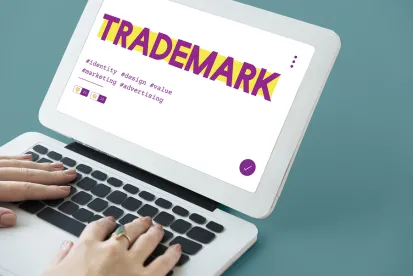The U.S. Patent and Trademark Office (USPTO) is offering limited relief to patent and trademark applicants affected by coronavirus disease (COVID-19) by waiving the fee for filing a petition to revive an abandoned patent or trademark application. Under an official notice issued by the USPTO, the office is considering the effects of the coronavirus to be “an extraordinary situation” justifying the waiver of fees. Deadlines and other requirements set by statute remain in force, but the USPTO is lowering the financial costs for reviving a patent or trademark application that went abandoned when a deadline was missed. Additionally, the USPTO is waiving the requirement for an original handwritten signature in the few instances where the office requires one.
For patent applicants who are unable to file a timely reply to a USPTO communication because of the coronavirus outbreak, the USPTO will waive the petition fee for filing a petition to revive the abandoned application under 37 C.F.R. § 1.137(a) (revival on the basis of unintentional delay). With the filing of the delayed reply, the applicant will need to include a copy of the USPTO’s official notice, which the USPTO will treat both as a representation that the applicant’s delay was due to the effects of the coronavirus outbreak and as a request for a waiver of the petition fee. Additionally, the applicant will need to file a petition to revive under 37 C.F.R. § 1.137(a) stating that the delay in filing the reply was because either the practitioner, the applicant, or at least one inventor was personally affected by the coronavirus outbreak such that a timely reply was unable to be filed.
To obtain the fee waiver, the patent applicant must file the petition to revive under 37 C.F.R. § 1.137(a) within two months of the USPTO issuing a notice of abandonment. If the applicant did not receive a notice of abandonment, then the applicant must file the petition within six months after the date that the application became abandoned.
For trademark applicants who are unable to file a timely reply to a USPTO communication because of the coronavirus outbreak, the USPTO will waive the petition fee for filing a petition to revive the abandoned application. The applicant should use the “Petition to Revive Abandoned Application” form on the Trademark Electronic Application System (TEAS). For trademark registrations that expired or were canceled because the registrant was unable to timely respond to a USPTO communication, the “Petition to the Director” form on TEAS should be used. In either case, the petition must include a statement explaining how the failure to respond to the USPTO communication was due to the effects of the coronavirus outbreak.
To obtain the fee waiver, the trademark applicant/registrant must file the petition to revive within two months of the USPTO issuing a notice of abandonment or cancelation. If the applicant/registrant did not receive a notice of abandonment or cancelation, then the applicant/registrant must file the petition within six months after the date that the application became abandoned or the registration was canceled/expired, as indicated by the trademark electronic records system.
In addition to the fee waivers, the USPTO is waiving the requirement for an original handwritten signature personally signed in ink for correspondence relating to registration to practice before the USPTO in patent cases, relating to enrollment/disciplinary investigations, and relating to disciplinary proceedings. The USPTO is also waiving the requirement for an original handwritten signature for payments by credit card where the payment is not being made via the USPTO’s electronic filing system. These requirements are the only USPTO requirements for original handwritten signatures in ink.
In lieu of an original handwritten signature, a person may provide one of the following: (1) a copy of an original signature; (2) an “S-signature” in the form of a typed signature inserted between forward slash marks; or (3) a graphic representation of a handwritten signature. Specific requirements for each of these signatures may be found in 37 C.F.R. § 1.4(d). When deemed appropriate, the USPTO’s Office of Enrollment and Discipline and Office of Finance may request that the signatures later be ratified or confirmed.
As you are aware, things are changing quickly and there is no clear-cut authority or bright line rules. This is not an unequivocal statement of the law, but instead represents our best interpretation of where things currently stand. This article does not address the potential impacts of the numerous other local, state and federal orders that have been issued in response to the Covid-19 pandemic, including, without limitation, potential liability should an employee become ill, requirements regarding family leave, sick pay and other issues.



 />i
/>i

